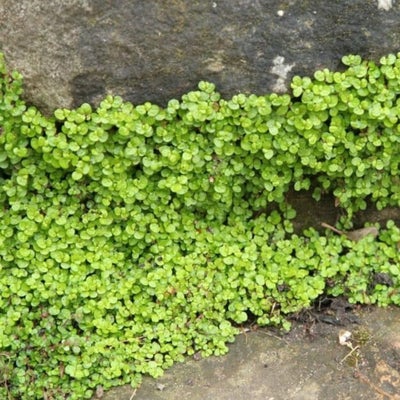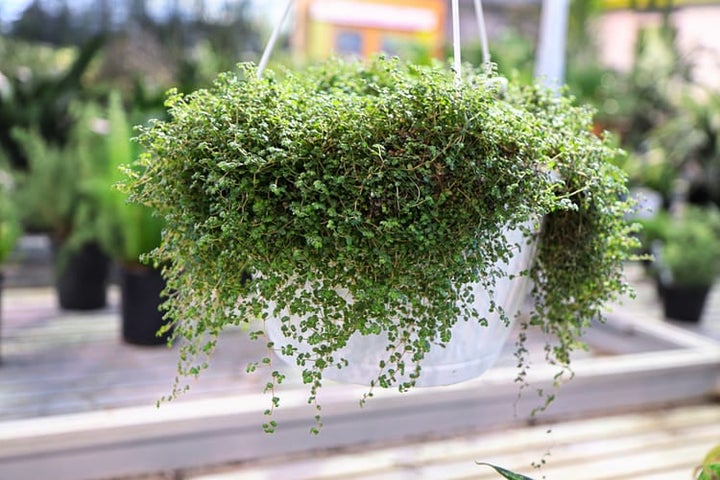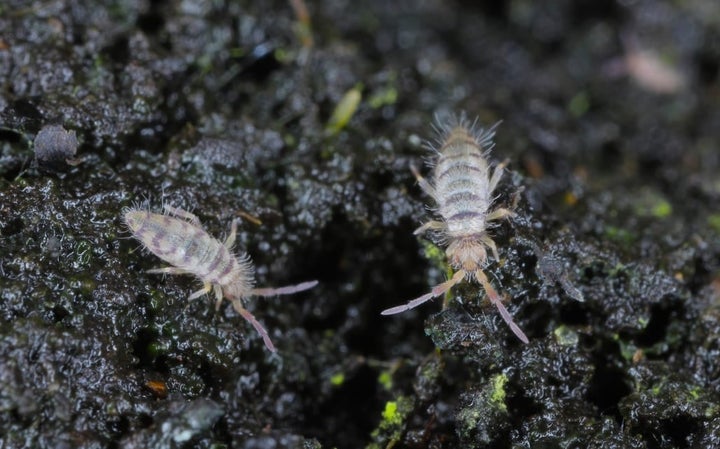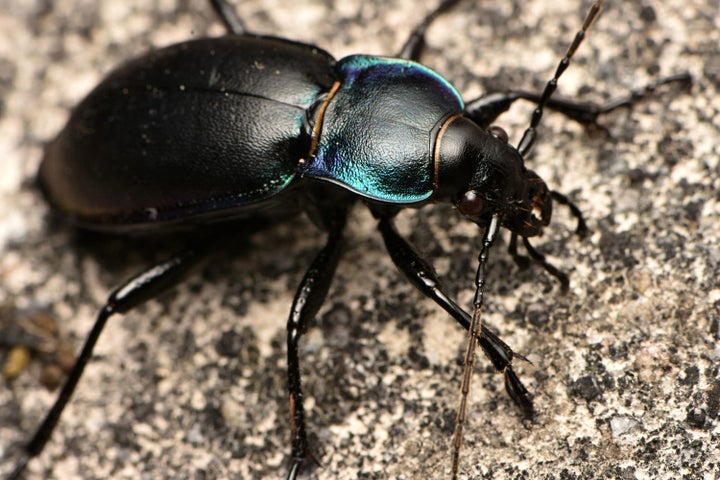
Quick facts
The botanical name for mind-your-own-business is Soleirolia soleirolii; it is also commonly known as baby’s tears
Mind-your-own-business prefers damp shade, but will grow and spread in most conditions
Ground-dwelling invertebrates find shelter in its dense, evergreen foliage
It also makes a good foliage houseplant for humid rooms
If you need to control mind-your-own-business, non-chemical methods are effective
What does mind-your-own-business look like?
Mind-your-own-business is a creeping evergreen with thin, highly-branched, pale green or pink stems that root along their length. Tiny, rounded green leaves cover the plant to create a dense, tactile, moss-like carpet. The golden-leaved ‘Aurea’ is also grown in gardens. In summer, plants bear minute pinkish-white flowers in the leaf axils. If pollinated, female flowers develop into a shiny, oval fruit containing a single seed.
Though they only grow to 5cm (2in) tall, individual plants can grow over 1m (3ft) wide.

Did you know?
Mind-your-own-business (Soleirolia soleirolii) is named after Lieutenant Henri Augstine Soleirol who discovered it growing wild in Corsica. It was introduced to England at the beginning of the 19th century and became a firm Victorian favourite, carpeting glasshouse borders and cloaking follies, statues and fountains.
Is mind-your-own-business a weed?
Mind-your-own-business is well-known for its ability to creep and spread, even in difficult growing conditions, and gardeners use this to their advantage when planting it to fill gaps in paving and drystone walls. It can be used as a lawn substitute in damp shade, used to create green walls and can even be used to create living sculptures, growing over chicken wire packed with growing media.


Its lush, tactile foliage is ornamental and makes good ground cover in shady gardens, an attractive trailing plant in hanging baskets and a compact houseplant for humid bathrooms and kitchens. When it is grown outside, the dense network of rooting stems help prevent soil erosion, plus it provides damp ground conditions that favour a number of invertebrates, including springtails and ground beetles.


However, as its stems root along their length, and the plant can regrow from tiny sections of stem, it can quickly stray out of bounds and become a nuisance in borders and lawns.
What is a weed?
The term ‘weed’ describes a plant that is growing where it isn’t wanted. Weeds usually thrive in average garden conditions, reproducing and spreading easily. It is up to you to decide what you call a weed and what you choose to retain or remove.
Frequently asked questions about controlling mind-your-own-business
Here are our answers to your most common questions about dealing with mind-your-own-business:
How invasive is mind-your-own-business?
Mind-your-own-business spreads quickly and easily by its creeping, rooting stems. Keeping a single clump in check is not too difficult with regular maintenance, but as its stems can easily be detached and moved around the garden, and tiny stem sections overlooked when weeding, a single plant can quickly become several. It can be especially troublesome in lawns, as mowing chops up and distributes the stems.
Do I need to get rid of mind-your-own-business?
No – allowing mind-your-own-business to fill gaps in paving and walls, grow as ground cover in mature, shady beds, or grow among grasses in a species-rich lawn is a great way to boost the of your garden.


It is, however, a good idea to keep mind-your-own-business in check by removing new growth before it spreads beyond its allotted space. This will prevent it smothering or out-competing young or small plants, such as or newly-sown lawn grasses.
What is the easiest way to kill mind-your-own-business?
If you have mind-your-own-business growing where it is not wanted, there are a few ways to remove it:
In beds and borders
- Remove plants with a trowel or hand fork – mind-your-own-business isn’t deep-rooting so is easily prized from the soil. Be thorough, removing as many pieces of stem as you can.
- Avoid digging and –as this can chop up and spread the rooting stems. Instead, where mind-your-own-business is dense and widespread, use a sharp spade to skim-off and remove the topmost layer of soil, minimising soil disturbance to lower layers.
- Supress weed growth – cover soil cleared of mind-your-own-business with an 8cm (3in) thick layer of organic matter to block out light and smother any regrowth. Alternatively, fill gaps in beds with mat-forming ground cover plants.
In lawns
- Remove plants and repair patches – use a trowel or hand fork to prize individual plants or small clumps from the soil and repair any resulting bare patches. This is best done in April or September to coincide with the best times to sow grass seed and lay turf.
- Lightly scarify – use a spring-tined rake to remove the bulk of mind-your-own-business stems in autumn, encouraging denser grass growth.
- Rake before you mow – this raises stems up for the mower blades. Just be sure to rake up and remove lawn clippings afterwards so stem sections don’t re-root.
- Encourage a healthy lawn – follow a lawn maintenance regime in spring/summer and autumn to encourage dense, healthy grass growth that will outcompete mind-your-own-business.
Top Tip
To prevent inadvertently spreading mind-your-own-business around your garden, take care to clean tools and boots after working in an area where it grows. As the rooting stems can survive the home-composting process, it is also best to add grass clippings and garden waste containing mind-your-own-business to your council green waste recycling bin.
Should I use weedkiller?
No – as mind-your-own-business can be controlled using non-chemical methods, there is no need to use a weedkiller. Mind-your-own-business is resistant to selective weedkillers for lawns, so although control here can be tricky, non-chemical methods are still your best option.
For more information, see our page on Weeds: non-chemical controls.










